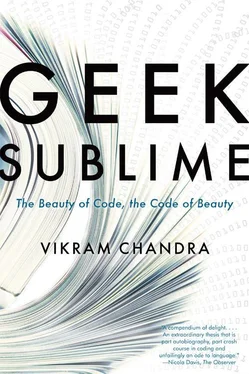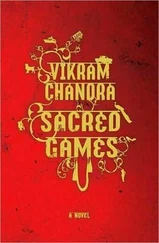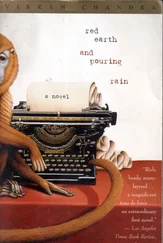Abhinavagupta insists that rasa cannot be “caused.” That is, mimesis — of things, of events, of people — offers us an opportunity for savoring, and this gustation is not a fixed or “frozen” mental state, a simple matter of stimulus and response, such as the joy one might feel in response to the words, “A daughter is born to you.” The sensitive viewer or reader inhabits the imitated action through an act of concentrated sympathy, and so
the relishing of beauty arises in us from our memory bank ( saṃaskāra ) of mental states which are suitable to the vibhāvas and anubhvās of those basic emotions [that are being portrayed in the characters of a literary work] …
So what is born here is a rasyamāṇatā (a being tasted, a gustation, of beauty), that is, a savouring that eclipses such worldly mental states as the joy that might be produced by reunion with a constant stream of old friends. And for this reason [viz., because of its super-normal character], the savouring serves to manifest something, not to inform one of something, as might be done by an established means of knowledge ( pramāṇa ). It is not a production such as results from the working of a cause. 19
The poet’s pratibha or intuitive genius — which harnesses craft and training — therefore depends on the sahrdaya ’s intuitive receptivity — which is polished by learning — to become complete. It is for this reason that Abhinavagupta begins his commentary on the Dhvanyaloka with an evocation of “the Muse’s double heart, the poet and the relisher of art.” The coming together of the poet and the reader is what creates “brave new worlds from naught and even stones to flowing sap has brought.” Beauty is imparted by the “successive flow of genius and of speech” from the poet to the sahrdaya. 20

Since rasa cannot be “caused” in a deterministic manner, you cannot produce art through test-driven development; your true sahrdaya may be born a hundred years after you die.
There are other qualities of poetic language that make verification difficult or impossible. The speech of the poet can be effective even when it doesn’t obey the rules of everyday language. According to Abhinavagupta, even denotative and connotative meanings are only aids to the production of rasa , unessential props which can sometimes be discarded: “Even alliterations of harsh or soft sounds can be suggestive of [ rasa ], though they are of no use as to meaning. Here, then, there is not even the shadow of the metaphor.” 21So music alone, without lyrics, can be the occasion of rasa. Even when language is used to construct an aesthetic object, when meaning and metaphor are necessarily present, to want the object — the poem, the story, the play — to convey coherent, verifiable information about the real world, as a treatise might, is to fall into a category error. Poetry’s meaning does not need any external referentiality or validation to produce pleasure. “[In poetry] the savouring … arises like a magical flower, having its essence at that very moment, and not connected with earlier or later times.” 22
Abhinavagupta goes even further, arguing that even at the level of syntactic units or the basic building blocks of a language, poetry is not always bound to the principles of coherence, meaning, and verification. “Poetic sentences,” for instance, “do not require validity so as to motivate [hearers] by communicating a true meaning … because they culminate only in pleasure.” 23So even language that does not cohere or produce mundane meaning may produce rasa. This is true, for instance, in language or sound poetry. Illegibility has its own pleasures, incomprehensibility may exalt. It is at the end of denotation that rasa manifests, as in Hindustani and Carnatic music, where the repetition of a single phrase by the singer — sometimes for hours — so empties the words that finally nothing is left but the fullness of the emotion, that which lies beyond words.

The grammarians of Sanskrit — the eternal, formal language — were, as one might expect, obsessed with correctness, precision, clarity. The proponents of the rasa-dhvani theory — from Anandavardhana onwards — faced fierce opposition from the orthodox on the grounds that there was no need to introduce a new semantic power to account for the suggestive functioning of art. Connotation, context, the speaker’s intent, and inference, the argument went, already accommodated this functionality. A ninth-century logician summarily dismissed Anandavardhana’s arguments and added, “In any case, this discussion with poets is not appropriate; even learned people become confused in this difficult path of sentence meaning.” 24
Our logician was understandably annoyed by the fuzzing up of the difficult but clean lines of sentence-meaning, least of all by poets, who — it must be admitted — can tend to be somewhat unlearned in logic. Nevertheless, what Anandavardhana tries to achieve in his analysis is completely in keeping with his intellectual tradition, which modeled all knowledge after Panini’s grammar: he tries to provide a systematic, algorithmic understanding of literary beauty and its effects. At the end of the Dhvanyaloka , he quotes a critic who declares, “We may speak of dhvani whenever an ineffable beauty of certain words and certain meanings is perceptible only to special cognizors, just as the rarity of certain gems [is known only to special experts].” Anandavardhana says bluntly that this critic is wrong, and argues that the
special [virtues] of words and meanings can be explained and have been explained in many ways [by himself]. To imagine that there is some ineffable virtue over and above these is to admit that one’s power of analysis has ceased … As for the definition sometimes given of ineffability, that it is the appearance of a thing [viz., of a unique particular] which cannot be referred to by a word for a mental construct ( vikalpa ) which is based on … the general or universal, this can no more apply to the special virtues of poetry than it can to the special virtues of gems. For the virtues of the former have been analysed by literary critics, while no estimate can be made of the value of a gem by reference merely to the general or universal. It is true, however, in both cases that these special virtues are recognizable only by experts. For only jewellers are knowers of gems and only sensitive critics ( sahṛdaya ) are knowers of the rasa of poetry. On this point no one will argue. 25
Perhaps the logician would have agreed, but I can’t help thinking that what also irritated him about Anandavardhana’s investigation was what it made of poets. In response to Anandavardhana’s assertion that dhvani provided endless freshness to language, Abhinavagupta observes that there are a limited number of things worthy of description
but by the multiplicity [of dhvani ] … these same things become limitless; hence there arises an infinity of poetic imagination taking them at its object … This can come about only if the poetic imagination is endless, and that only if the objects to describe endless; and that only because of the variety of dhvani. 26
Ingalls writes:
What is notable here is that the variety of suggestiveness is placed outside the human mind; it is the cause, not the result of poetic imagination. It is as though our authors thought of the objects of the world as existing in a pattern which rendered them amenable to mutual suggestions when viewed by a great poet. The poet’s imagination, in this view, would be the medium, not the primary cause, of the creation of new worlds. The worlds would already be there through the magic which underlies dhvani. Such a view is in harmony with the origin of the Sanskrit word for poet, kavi. A kavi is a seer, a revealer. 27
Читать дальше













